The Bear (known as L'Ours in its original release) is a 1988 French film directed by Jean-Jacques Annaud and released by TriStar Pictures. Adapted from the novel The Grizzly King (1916) by American author James Oliver Curwood, the screenplay was written by Gérard Brach. Set in late 19th-century British Columbia, Canada, the film tells the story of an orphaned bear cub who befriends an adult male grizzly as hunters pursue them through the wild. Several of the themes explored in the story include orphanhood, peril and protection, and mercy toward and on the behalf of a reformed hunter.
| The Bear | |
|---|---|
American film poster | |
| Directed by | Jean-Jacques Annaud |
| Produced by | Claude Berri |
| Written by | Gérard Brach James Oliver Curwood (novel) |
| Starring |
|
| Music by | Philippe Sarde |
| Cinematography | Philippe Rousselot |
| Edited by | Noëlle Boisson |
| Distributed by | TriStar Pictures |
Release date | 19 October 1988 |
Running time | 94 minutes |
| Country | France |
| Language | English |
| Box office | $31,753,898 (U.S. and Canada) >$120 million (worldwide) |
Annaud and Brach began planning the story and production in 1981, although filming did not begin until six years later, due to the director's commitment to another project. The Bear was filmed almost entirely in the Italian and Austrian areas of the Dolomites, with live animals—including Bart the Bear, a trained 9-foot tall Kodiak—present on location. Notable for its almost complete lack of dialogue and its minimal score, the film was nominated for and won numerous international film awards.
Screenplay
In the mountainous wilds of British Columbia, Canada, circa 1885, a young grizzly bear cub suffers the accidental death of his mother from a rockslide while digging for honey. Forced to fend for himself, the cub struggles to find food and shelter. Elsewhere in the mountains, a large male grizzly is pursued by two trophy hunters (Jack Wallace and Tcheky Karyo). Although the younger hunter attempts to kill the bear, his shot fails to take the animal down, and the wounded bear flees. Coming across the grizzly a short time later, the cub attempts to befriend him. Uninterested in the cub and distracted by his wound, the adult bear warns the young orphan away with a growl. The cub approaches again, however, and manages to soothingly lick the other bear's wound. A friendship forms between the two bears, and the grizzly takes the orphan under his wing, teaching him to fish and hunt. At night, the cub suffers from nightmares, reliving the tragic death of his mother.
Determined to find the grizzly, the two hunters are joined by a third man (Andre Lacombe) and a pack of hunting Beaucerons. A chase ensues, in which both bears are driven toward a cliff, with the dogs in pursuit. While the cub hides, the grizzly lures the dogs away, killing some of them. He then escapes over the pass with the remaining dogs following behind. The hunters arrive to find their dogs dead or badly injured, one of them being the favorite Airedale Terrier of one of the hunters. Finding the frightened cub, they take him to their camp, where he is tethered to a tree, and tormented by the hunters and their vicious dogs. That night, the hunters plot how to kill the grizzly.
The next day, the hunters separate, with the younger one manning a spot high on a cliff near a waterfall. He descends from his post to wash up in a small waterfall in the hills. His gun out of reach, the hunter suddenly finds himself cornered by the grizzly, who rears and roars at the sight of the man. Faced with certain death, the hunter cowers in fear. The grizzly, seemingly affected by the hunter's distress, turns and leaves. The young hunter, impressed by the bear's act of mercy, attempts to scare him off more quickly by shooting his gun into the air. When the hunter's companion joins him, having heard the gunshots, the younger man tells him that the bear is dead. However, spying the bear ascending a scree, the older man raises his rifle to shoot, only to be stopped by the other man. The three hunters return to their camp empty-handed, where they free the young cub and then ride off into the wilderness.
Alone again, the cub is soon confronted by a cougar, who corners the young bear near a stream. Trying to defend himself against the cougar's attack, the bear struggles to roar. Suddenly, a loud and menacing roar chases the cougar away. Turning, the cub sees the adult grizzly and runs to his side, where he is comforted. As winter approaches, the two bears enter a cave together for hibernation.
Before the end credits a quote by J.O Curtwood comes up saying "The greatest thrill is not to kill but to let live."
Sources
American author James Oliver Curwood's novella The Grizzly King was published in 1916. The story was based on several trips he took to British Columbia, and the young hunter, called Jim in the book, is based on Curwood himself. However, many of its plot elements—mainly dealing with the friendship between the cub and the eponymous grizzly bear—were fabricated. Curwood's biographer, Judith A. Eldridge, believes that the incident in which the hunter is spared by a bear is based on truth, a fact that was later related to Jean-Jacques Annaud. He stated during an interview that he "was given a letter from Curwood's granddaughter revealing that what happened in the story happened to him. He was hunting bear, as he had done often, and lost his rifle down a cliff. Suddenly, a huge bear confronted him and menaced him, but for reasons Curwood could never know, spared his life." Shortly after the book's publication, Curwood—once an adamant hunter—became a supporter of wildlife conservation.
Brach and Annaud decided to set the film in the late 19th century in order to create a perception of true wilderness, especially for the human characters. In addition, while both the bears and the two hunters are named in the script, their names are not mentioned in the film. The bear cub is referred to in the script as Youk, and the adult grizzly is known as Kaar. Tchéky Karyo's character is said to have been called Tom and Jack Wallace's is Bill. These names differ from Curwood's novel; for example, the cub is known as Muskwa in the novel, and his adult companion is called Thor.
Development
After the commercial success of Jean-Jacques Annaud's previous films, including the Academy Award-winning Black and White in Color (1976) and Quest for Fire (1981), producer Claude Berri offered to produce Annaud's next project, no matter the cost. The French filmmaker had first considered the idea of making a film that included mammal communication through behavior, rather than language, while working on Quest for Fire. He became particularly interested in making an animal "the star of a psychological drama", so he "decided to do an entertaining, commercial adventure and psychological film" that would have an animal hero. He discussed this idea with his longtime collaborator, screenwriter Gerard Brach, who within a few days sent Annaud a copy of The Grizzly King, to which the filmmaker quickly agreed.
Although Brach began writing the screenplay in late 1981, Annaud took on another project, that of directing a film adaptation of Umberto Eco's book The Name of the Rose. Between preparing for and filming his next film, Annaud traveled and visited zoos in order to research animal behavior. In an interview he later gave with the American Humane Association, Annaud stated: "Each time I was fascinated with the tigers, to a point that I thought to do a movie called The Tiger instead of The Bear. In those days I felt that the bear, because they're so often vertical, would give me a better identification, or would provide more instant identification from the viewers." The finished script was presented to Berri in early 1983.
Filming
Shot from 13 May to late October 1987, The Bear was filmed almost entirely in the Italian and Austrian areas of the Dolomites. Several additional scenes were also filmed in a Belgian Zoo in early 1988. The crew consisted of 200 individuals. Husband and wife team Tony and Heidi Lüdi served as the film's production designer and art director, respectively, alongside set decorator Bernhard Henrich. In their book, Movie Worlds: Production Design in Film, the Lüdis state that as the film's production designers, they "were constantly faced with the question 'What did you have to do?' To which we answered 'We turned the Alps into British Columbia.'" Cinematographer Philippe Rousselot noted that "the only thing Jean-Jacques was unable to control" while filming in the Bavarian Alps "was the weather: he did not manage to have the clouds take part in pre-production meetings."
While animatronic bears were used for several of the fighting scenes, live animals—including bears, dogs, horses, and honey bees—were used on location for filming. A trained, 9-foot tall Kodiak bear named Bart played the adult grizzly, while a young female bear named Douce ("Sweet" in English) took on the role of the cub, with several alternates. Three trainers worked with Bart (including his owner Doug Seus), eleven with the cubs, three with the dogs, and three with the horses. One day during production, Bart injured Annaud while the two posed for photographers; Annaud's wounds, which included claw-marks on his backside, had to be drained with a shunt for two months. In addition to the real bears, there were animatronic bears which were used in specific scenes that were made by Jim Henson's Creature Shop.
With its intersecting story lines of animals and humans, The Bear includes a variety of thematic elements. These themes include orphanhood, peril and protection, and mercy toward and on the behalf of a reformed hunter.
Film critic Derek Bousé has made the connection between The Bear and Disney's model of wildlife films, comparing not only the sympathetic characters but also the filmatic structure, to the animated Bambi (1942) and the live-action Perri (1957). In his 2000 book Wildlife Films, Bousé makes a stronger correlation between Annaud's film and Disney's Dumbo (1941), in that both young animals lost their mothers at an early age, creating an unfortunate situation that allows the rest of the plot to develop (although, Dumbo's mother was merely imprisoned for a while, and was re-united with her son at the film's end). Dumbo and The Bear also share a similarly purposed dream sequence, brought on by alcohol in the former and hallucinogenic mushrooms in the latter.
The theme of the reformed hunter is a direct reference to the original novel and its author. James Oliver Curwood, himself a past hunter and trapper, considered The Grizzly King to be a "confession of one who for years hunted and killed before he learned that the wild offered a more thrilling sport than slaughter". During its American release, the film used one of Curwood's famous quotes as a tagline—"The greatest thrill is not to kill but to let live"—and the film was endorsed by both the American Humane Association and the World Wildlife Fund.
The Bear was released on 19 October 1988 in France, and 27 October 1989 in the United States. An official tie-in to the movie, The Odyssey of 'The Bear': The Making of the Film by Jean-Jacques Annaud, a translation from the French edition, followed in November. In addition, Curwood's original novel—out of print in the US for fifty years—was republished by Newmarket Press, and a children's book titled The Bear Storybook was published by St. Martin's Press.
By August 1989, The Bear was reported to have grossed $90,685,310 and was yet to open in the United Kingdom, the Far East and the United States and Canada. The Bear later grossed $31,753,898 in the United States and Canada taking its worldwide gross to over $120 million.
The film was a critical success, holding a 92% "Fresh" rating on the review aggregate website Rotten Tomatoes. Some critics pointed to The
Watch movie The Bear 1988 Film online on Amazon
Watch movie The Bear 1988 Film online
Watch The Movie On PrimeDarling Full HD Movie Download
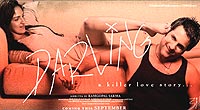
The Boss - Of The Underworld Full HD Movie Download
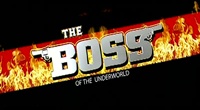
chor mandli 2 Full HD Movie Download

Naami Chor Full HD Movie Download
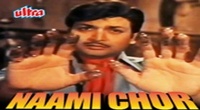
Dum Dum Diga Diga Full HD Movie Download
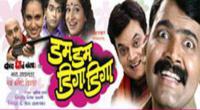
Samaj Ko Badal Dalo (1970) Full HD Movie Download
.jpg)
Cheppu Full HD Movie Download
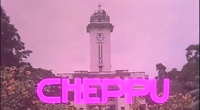
Maa Aur Mamta Full HD Movie Download
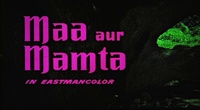
Apsara Full HD Movie Download
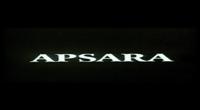
Chunauti Full HD Movie Download
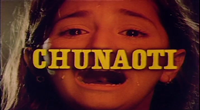
Dharam Yudh (1988) Full HD Movie Download
.jpg)
Dholi Taro Dhol Vaage Full HD Movie Download
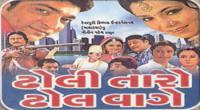
Desh Re Joya Dada Pardesh Joya Full HD Movie Download
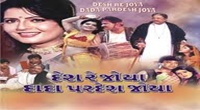
Edegarike Full HD Movie Download
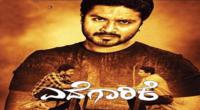
Jalakanta Full HD Movie Download
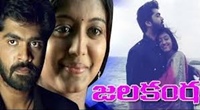
Padavi Pramanam Full HD Movie Download
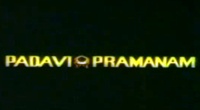
Bangaru Chilaka Full HD Movie Download
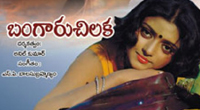
Bhale Krishnadu Full HD Movie Download
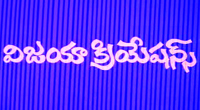
Evarunenu Full HD Movie Download
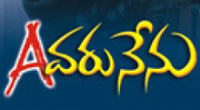
Neeke Manasichanu Full HD Movie Download
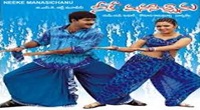
Japanil Kalyanaraman Full HD Movie Download
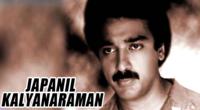
Download latest Movie from bollywood
- 1> baaghi 3
- 2> THE SKY IS PINK MOVIE FULL STORY AND REVIEW
- 3> Luka Chuppi
- 4> TO ALL THE BOYS I’VE LOVED BEFORE
- 5> Kabir Singh
- 6> Street Dancer 3D
- 7> Simmba
- 8> Gone Girl
- 9> The Girl Who Lived
- 10> Ludo
- 11> DILWALE DULHANIA LE JAYENGE
- 12> GUILTY
- 13> The Godfather
- 14> Adventures of Rusty
- 15> Sooryavanshi
- 16> Satyameva Jayate 2
- 17> Thappad
- 18> Bhool Bhulaiyaa 2
- 19> KGFChapter 2
- 20> Mardaani 2
- 21> Pinjar
- 22> Shivaji maharaj
- 23> Ek Villian 2
- 24> Hungama 2
- 25> Divergent
- 26> Mumbai Saga
- 27> The Internship
- 28> HIT (telugu)
- 29> Panga
- 30> The perfect date
- 31> 16 December
- 32> Gopala Gopala (Telugu)
- 33> Brahmastra
- 34> Gangubai Kathiawadi
- 35> Manmadhudu
- 36> Nenu local
- 37> Mahanati
- 38> Shatamanam bavathi
- 39> Lagaan
- 40> After
- 41> MOM
- 42> Shamshera
- 43> Raguvaran BTech
- 44> Khakee
- 45> The villain
- 46> OM
- 47> Mr. perfect
- 48> Bueatifull mind
- 49> Hichki
- 50> Gabbar Singh
- 51> Jogi
- 52> Before Sunrise
- 53> Before Sunset
- 54> Before Midnight
- 55> The Big Bull
- 56> Top Gun: Maverick
- 57> The Purge
- 58> The Sky is Pink
- 59> Laxmmi Bomb
- 60> Sadak 2
- 61> Sufna
- 62> Prithviraj
- 63> PK
- 64> Coolie No 1(2020)
- 65> Black Widow
- 66> Dear Zindagi
- 67> Dil Bechara
- 68> PHIR HERA PHERI
- 69> WAR
- 70> Dostana
- 71> RRR: Roudram Ranam Rudhiram
- 72> Maidan
- 73> Dabbang 3
- 74> Chhalaang
- 75> life as we know it
- 76> SherShaah
- 77> Sandeep Aur Pinky Faraar
- 78> Event Horizon
- 79> 83
- 80> Radhe: Your Most Wanted Bhai
- 81> Gunjan Saxena: The Kargil Girl
- 82> Mr India
- 83> Vivah
- 84> Anokha Bandhan
- 85> Ghost
- 86> Bhoot: Part One - The Haunted Ship
- 87> Haseen Dilruba
- 88> Laal Singh Chaddha
- 89> Qismat
- 90> Rajput
- 91> Drive
- 92> Dil Chahta Hai
- 93> Dil Ki Baazi
- 94> Dil Ka Rishta
- 95> Teesri Manzil
- 96> Dil
- 97> Love Aaj Kal
- 98> Khaali Peeli
- 99> Bunty Aur Babli 2
- 100> Atrangi Re
- 101> Gulabo Sitabo
- 102> Jodi
- 103> Suraj Pe Mangal Bhari
- 104> Deewana
- 105> Attack
- 106> Sardar Udham Singh
- 107> Toofan
- 108> THE LOVEBIRDS
- 109> Jersey
- 110> Ginny Weds Sunny
- 111> Thalaivi
- 112> Shiddat
- 113> Angels vs Zombies
- 114> Koi Mil Gya
- 115> Thank God
- 116> Bhuj: The Pride of India
- 117> Hum Aapke Hain Kaun
- 118> The Platform
- 119> Bird Box
- 120> Roohi Afzana
- 121> Torbaaz
- 122> Nikamma
- 123> World War Z
- 124> Extraction
- 125> Train to Busan
- 126> Life of Pi
- 127> SHAADI MEIN JROOR AANA
- 128> Himmat Aur Mehnat
- 129> To All The Boys: P.S. I Still Love You
- 130> Mimi
- 131> Good Newwz
- 132> Shubh Mangal Zyada Saavdhan
- 133> Raabta
- 134> Harry Potter and the Philosopher's Stone
- 135> Harry Potter and the Chamber of Secrets
- 136> Chhapaak
- 137> War of the Worlds
- 138> Harry Potter and the Prisoner of Azkaban
- 139> Harry Potter and the Goblet of Fire
- 140> MURDER MYSTERY
- 141> Shakuntala Devi
- 142> Bachchan Pandey
- 143> Jayeshbhai Jordar
- 144> Sheer Qorma
- 145> Saina
- 146> 'O' Pushpa I hate tears
- 147> Kedarnath
- 148> MS Dhoni The Untold Story
- 149> Chhichhore
- 150> Badhaai Ho
- 151> Unstoppable
- 152> Oz the Great And Powerful
- 153> The Girl on the Train
- 154> Haathi Mere Saathi 2020
- 155> The Conjuring: The Devil Made Me Do It
- 156> Gandhi Se Pehle Gandhi
- 157> The Song of Scorpions
- 158> Srimanthudu
- 159> Hello Guru Prema Kosame
- 160> Beauty and The Beast
- 161> Black Panther
- 162> Charlie and the Chocolate Factory
- 163> Bole Chudiyan
- 164> Fidaa
- 165> Duvvada Jagannadham
- 166> Bruce Lee: The Fighter
- 167> Hyper
- 168> Yaara
- 169> Red (2020)
- 170> Shivam
- 171> That Is Mahalakshmi
- 172> Nishabdham
- 173> Aashram 2020 web series
- 174> Laxmii
- 175> Mismatched
- 176> STUDENT OF THE YEAR 2
- 177> NAIL POLISH
- 178> Ramprasad Ki Tehrvi
- 179> KAAGAZ
- 180> 12 o Clock
- 181> The Power
- 182> bolo hau
- 183> Tribhanga
- 184> JAMUN
- 185> Madam Chief Minister
- 186> Maasaab
- 187> Aadhaar
- 188> Tanhaji
- 189> Bhaagi 3
- 190> Bhootnath
- 191> MALANG
- 192> Jai Mummy Di
- 193> Haathi Mere Saathi 2021
- 194> Shakeela
- 195> Unpaused
- 196> Annayya
- 197> Vamsoddharakudu
- 198> Mrugaraju
- 199> Narasimha Naidu
- 200> Sankranti
- 201> Manasu Maata Vinadhu
- 202> Anjaane
- 203> Apaharan
- 204> Bachke Rehna Re Baba
- 205> Bewafaa
- 206> Roohi
- 207> Radhe
- 208> Zindagi Khoobsoorat Hai
- 209> Yeh Mohabbat Hai
- 210> Yeh Kya Ho Raha Hai?
- 211> The Tomorrow War
- 212> DehradunDiary
- 213> Meri Shaadi Karaoo
- 214> Matruu Ki Bijlee Ka Mandola
- 215> No One Killed Jesica
- 216> Aag Ka Goola
- 217> Eight Million Dollars
- 218> Three Hundred
- 219> Cats and Dog
- 220> Decoy
- 221> Gold Rush
- 222> You Have Got Mail
- 223> Final Destination three
- 224> Tofan
- 225> Jungle
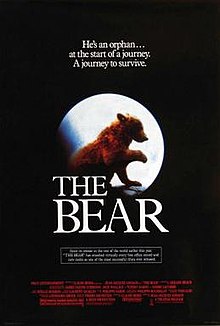 Story of movie The Bear 1988 Film :
Story of movie The Bear 1988 Film : 